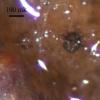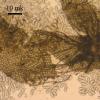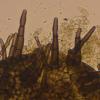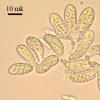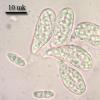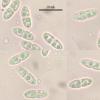
14-11-2011 16:49
Sur feuilles de Carpinus betulus, pycnides brun fo

12-11-2011 21:20
 Yannick Mourgues
Yannick Mourgues
Bonsoir à tous.Je cherche la référence suivante

17-06-2008 23:11
NC NCSur branche de fraxinus excelsior à terre, décor

05-11-2011 10:55
Ismael WindOn Larix i found 2 specimens of ascocoryne. The fi

08-11-2011 16:08
 Yatsiuk Iryna
Yatsiuk Iryna
Hello, forum! There is Bisporella collected on Po

10-08-2011 20:09
 Yannick Mourgues
Yannick Mourgues
Bonjour.J'aimerai vos avis sur cette espèce.Ascom

06-11-2011 15:18
 Martin Bemmann
Martin Bemmann
Hello,is someone able to provide this paper?Gams&a

05-11-2011 17:38
 Bernard Declercq
Bernard Declercq
Hi,I recently collected a discomycete on Hieracium
i am currenly working with collection of Perithecia-forming species inhabiting Andromeda leaf litter. My orientation in the systematic space of this group is still poor. Could you possibly give me a clue on approximate position of this representative?, it seems beautiful and distinctive one.
On fallen leaves of A. polifolia, C. calyculata, L. palustre in raised bog community.
Ascomata scattered on both sides of the leaf, sphaerical, superficial, setose around the pore, and with descending hyphae in lower part, up to 150 mk in diameter.
Setae brown, septate, thick-walled, straight and short near the pore, bent and longer outward, 40-80 mk long, 8 mk broad at base, narrowing to obtuse tip; descending hyphae brown, septate, about 1 mk broad; asci clavate, attached to stalks which connected together in bunches, 20–23 x 8–9.6 mk, dehiscence mode unclear; hamathecium from elongated thin elements surrounded by gelatinous substance; spores hyaline, two-celled, with deep constriction, with many small to medium oil guttules, measured in vital state 10 (9–1.8) x 3.5 (3.3–3.9) mk (n=22).
i am still searching any information about this taxon. It is puzzling ). It may belong to Mycosphaerellaceae because absence of paraphyses, two-celled hyaline spores and fasciculate asci. But i could not decide any precisely about genus and species.
Nina.

Check von Arx and Müller (1975) Studies in Mycology n°9 (available here: http://www.cbs.knaw.nl/index.php/studies-in-mycology/378-studies-in-mycology-no-9).
Did you noticed the presence of superficial hyphae too? Could be a Wentiomyces or Epipolaeum species, but the habitat is uncommon and both are more frequently found on live leaves. Aditionally, Epipolaeum has coloured ascospores, and your specimen appears to be hyaline, at least initially.
Good luck.
